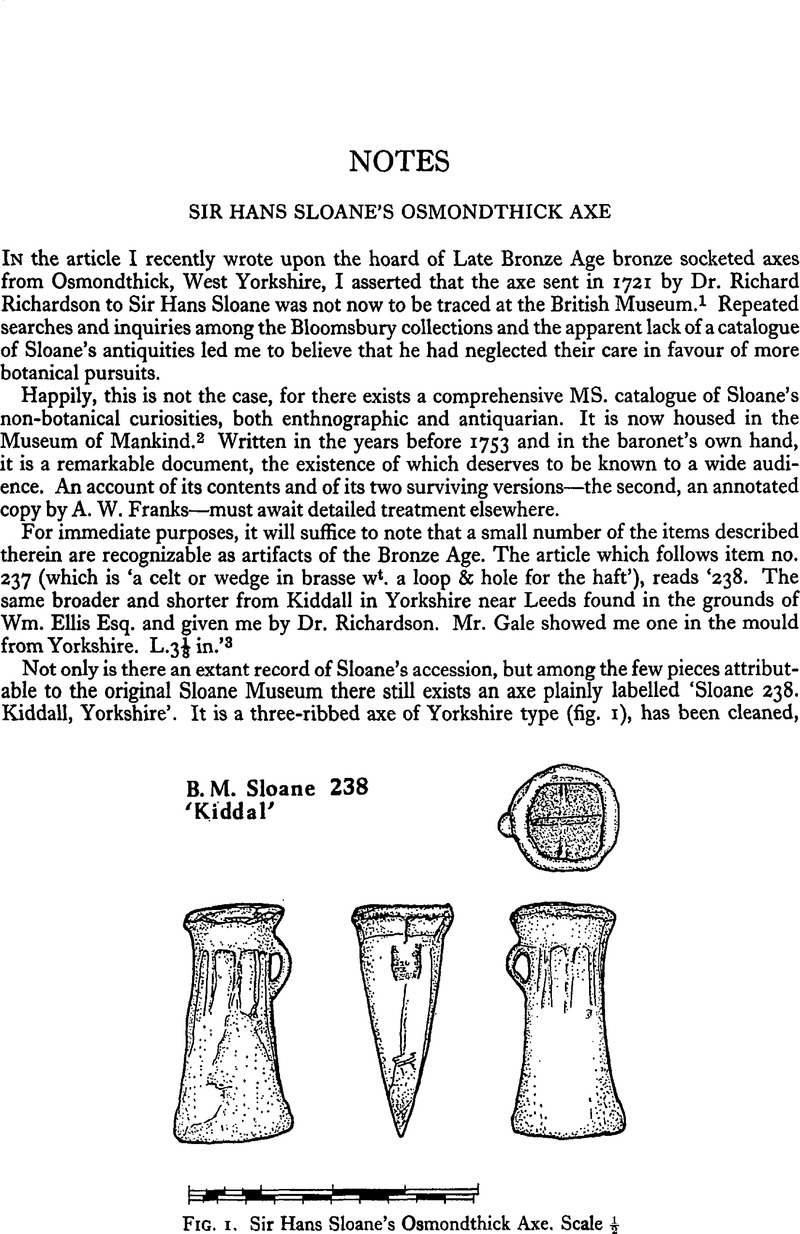No CrossRef data available.
Published online by Cambridge University Press: 29 November 2011

26 Evans, Joan, A History of Jewellery 1100–1870 (2nd ed., 1970), pp. 11–12 and pl. 11 (a and b).Google Scholar
27 I am grateful to Mr. Harry Brooksby F.S.A., of the R.C.A.H.M. in Wales for information in advance of its publication in the Glamorgan Inventory.
28 Williams, Glanmor, ‘Rice Mansell of Oxwich and Margam (1487–1559)’ Morgannwg, vi (1962), 33–51.Google Scholar
29 The stones were first identified by Mr. D. Emlyn Evans of the Department of Geology at the National Museum of Wales, an identification confirmed by Mr. E. A. Jobbings of the Geological Museum, who reported that examination under a binocular microscope (×40) suggested Burma as the most likely source on grounds of colour and inclusions, which included that known as ‘silk’. A Norwegian source could be ruled out on grounds of colour, and a Siamese source following examination under ultra-violet light, using both long (365.0 nm) and short (235.7 nm) waves, which showed fluorescence.
30 Stone, Lawrence, Sculpture in Britain: the Middle Ages (London, 1955), pl. 85B. There is a plaster cast of the figure in Wells Museum.Google Scholar
31 Gardner, Arthur, English Medieval Sculpture (Cambridge, 1951), p. 141, pl. 267.Google Scholar
32 Hahnloser, Hans R., Villard de Honnecourt (Graz, 1972), pls. 16. 18, 28, 46, 52–3, 56.Google Scholar
33 Wentzel, H., ‘Portraits à l'antique in French medieval gems and seals’, J. Warburg and Courtauld Insts. xvi (1953), 348, no. 70, pl. 51.g.Google Scholar
34 Millar, E. G., The Luttrell Psalter (London, 1932), f. 55 (pl. XIB), f. 159 (pl. LXX).Google Scholar
35 Cf. Nelson, Philip, ‘Some British medieval seal-matrices’, Arch. J. xiv (1934), 13–44Google Scholar; Tonnochy, A. B., Catalogue of British seal-dies in the British Museum (London, 1952), pp. xviii–xix.Google Scholar
36 Babelon, E., Catalogue des camées antiques et modernes de la Bibliothèque Nationale (Paris, 1897), p. lxviii.Google Scholar
37 Cf. Dalton, O. M., Catalogue of Engraved Gems of the Post-Classical Periods (British Museum, 1915), p. xxxviii.Google Scholar
38 Cf. Gay, V., Glossaire archéologique (Paris, 1887), s.v. camahieu; Babelon, op. cit., pp. lxviii–lxix.Google Scholar
39 Babelon, , op. cit., e.g. nos. 387, 390, 393, 395, 401, 406–7, 431.Google Scholar
40 Babelon, , op. cit., no. 988Google Scholar; also the fine Italian head of a knight in a mail coif, cited by Dalton and illustrated in Jahrbuch der Kunsthist. Samml. des Kaiserhauses, 11 (1884), p. 37 and pl. III, fig. 5.Google Scholar
41 Wenzel, Hans, ‘Die vier Kameen im Aachener Domschatz und die französische Gemmenschneiderkunst des 13. Jahrhunderts’, Zeitschrift, für Kunstwissenschaft, viii (1954), 1–18, figs. 1–7.Google Scholar